541 low relevance results shown for 'Red'. Prev |1|2|3|4|5|6|7|8|9|10|11|12|13|14|15|16|17|18|19|20|21|22 | Next | View 100 per page
Showing low relevance matches only. Return to normal search results
DNA - The transmission of heritable characteristics from one generation to the next involves DNA and genes ACSSU097 Year 6 Physical Sciences
Electrical Circuits - Electrical energy can be transferred and transformed in electrical circuits and can be generated from a range of sources ACSSU115 Year 7 Earth and Space Sciences
Earth Moon Sun - Predictable phenomena on Earth, including seasons and eclipses, are caused by the relative positions of the sun, Earth and the moon ACSSU229 Year 10 Physical Sciences
Forces and Motion - The motion of objects can be described and predicted using the laws of physics ACSBL029 Year 11 Biodiversity and the interconnectedness of life
Ecosystem dynamics - Models of ecosystem interactions (for example, food webs, successional models) can be used to predict the impact of change and are based on interpretation of and extrapolation from sample data (for example, data derived from ecosystem surveying techniques ACSBL085 Year 12 Heredity and continuity of life
DNA genes and the continuity of life - Frequencies of genotypes and phenotypes of offspring can be predicted using probability models, including Punnett squares, and by taking into consideration patterns of inheritance, including the effects of dominant, autosomal and sex-linked alleles and mu ACSBL090 Year 12 Heredity and continuity of life
Continuity of life on Earth - Natural selection occurs when selection pressures in the environment confer a selective advantage on a specific phenotype to enhance its survival and reproduction; this results in changes in allele frequency in the gene pool of a population ACSBL091 Year 12 Heredity and continuity of life
Continuity of life on Earth - In additional to environmental selection pressures, mutation, gene flow and genetic drift can contribute to changes in allele frequency in a population gene pool and results in microevolutionary change ACSCH056 Year 11 Molecular interactions and reactions
Intermolecular forces and gases - The shapes of molecules can be explained and predicted using three dimensional representations of electrons as charge clouds and using valence shell electron pair repulsion (VSEPR) theory ACSCH073 Year 11 Molecular interactions and reactions
Rates of chemical reactions - Catalysts, including enzymes and metal nanoparticles, affect the rate of certain reactions by providing an alternative reaction pathway with a reduced activation energy, hence increasing the proportion of collisions that lead to a chemical change ACSCH091 Year 12 Equilibrium acids and redox reactions
Chemical equilibrium systems - Over time, physical changes and reversible chemical reactions reach a state of dynamic equilibrium in a closed system, with the relative concentrations of products and reactants defining the position of equilibrium ACSCH096 Year 12 Equilibrium acids and redox reactions
Chemical equilibrium systems - Equilibrium position can be predicted qualitatively using equilibrium constants ACSCH097 Year 12 Equilibrium acids and redox reactions
Chemical equilibrium systems - Acids are substances that can act as proton (hydrogen ion) donors and can be classified as monoprotic or polyprotic depending on the number of protons donated by each molecule of the acid ACSCH098 Year 12 Equilibrium acids and redox reactions
Chemical equilibrium systems - The strength of acids is explained by the degree of ionisation at equilibrium in aqueous solution, which can be represented with chemical equations and equilibrium constants (Ka) ACSCH099 Year 12 Equilibrium acids and redox reactions
Chemical equilibrium systems - The relationship between acids and bases in equilibrium systems can be explained using the Brønsted Lowry model and represented using chemical equations that illustrate the transfer of hydrogen ions ACSCH100 Year 12 Equilibrium acids and redox reactions
Chemical equilibrium systems - The pH scale is a logarithmic scale and the pH of a solution can be calculated from the concentration of hydrogen ions; Kw can be used to calculate the concentration of hydrogen ions from the concentration of hydroxide ions in a solution ACSCH101 Year 12 Equilibrium acids and redox reactions
Chemical equilibrium systems - Acidbase indicators are weak acids or bases where the acidic form is of a different colour to the basic form ACSCH102 Year 12 Equilibrium acids and redox reactions
Chemical equilibrium systems - Volumetric analysis methods involving acidbase reactions rely on the identification of an equivalence point by measuring the associated change in pH, using chemical indicators or pH meters, to reveal an observable end point ACSCH103 Year 12 Equilibrium acids and redox reactions
Oxidation and reduction - A range of reactions, including displacement reactions of metals, combustion, corrosion, and electrochemical processes, can be modelled as redox reactions involving oxidation of one substance and reduction of another substance ACSCH104 Year 12 Equilibrium acids and redox reactions
Oxidation and reduction - Oxidation can be modelled as the loss of electrons from a chemical species, and reduction can be modelled as the gain of electrons by a chemical species; these processes can be represented using half equations ACSCH106 Year 12 Equilibrium acids and redox reactions
Oxidation and reduction - The relative strength of oxidising and reducing agents can be determined by comparing standard electrode potentials ACSCH107 Year 12 Equilibrium acids and redox reactions
Oxidation and reduction - Electrochemical cells, including galvanic and electrolytic cells, consist of oxidation and reduction half reactions connected via an external circuit that allows electrons to move from the anode (oxidation reaction) to the cathode (reduction reaction) ACSCH108 Year 12 Equilibrium acids and redox reactions
Oxidation and reduction - Galvanic cells, including fuel cells, generate an electrical potential difference from a spontaneous redox reaction; they can be represented as cell diagrams including anode and cathode halfequations ACSCH110 Year 12 Equilibrium acids and redox reactions
Oxidation and reduction - Cell potentials at standard conditions can be calculated from standard electrode potentials; these values can be used to compare cells constructed from different materials ACSCH130 Year 12 Structure synthesis and design
Properties and structure of organic materials - Data from analytical techniques, including mass spectrometry, xray crystallography and infrared spectroscopy, can be used to determine the structure of organic molecules, often using evidence from more than one technique ACSPH040 Year 11 Thermal nuclear and electrical physics
Electrical circuits - The energy available to charges moving in an electrical circuit is measured using electric potential difference, which is defined as the change in potential energy per unit charge between two defined points in the circuit ACSPH041 Year 11 Thermal nuclear and electrical physics
Electrical circuits - Energy is required to separate positive and negative charge carriers; charge separation produces an electrical potential difference that can be used to drive current in circuits ACSPH061 Year 11 Linear Motion and Waves
Linear motion and force - Representations, including graphs and vectors, and/or equations of motion, can be used qualitatively and quantitatively to describe and predict linear motion ACSPH064 Year 11 Linear Motion and Waves
Linear motion and force - Momentum is a property of moving objects; it is conserved in a closed system and may be transferred from one object to another when a force acts over a time interval ACSPH065 Year 11 Linear Motion and Waves
Linear motion and force - Energy is conserved in isolated systems and is transferred from one object to another when a force is applied over a distance; this causes work to be done and changes to kinetic and/or potential energy of objects ACSPH073 Year 11 Linear Motion and Waves
Waves - A mechanical system resonates when it is driven at one of its natural frequencies of oscillation; energy is transferred efficiently into systems under these conditions ACSPH076 Year 11 Linear Motion and Waves
Waves - A wave model explains a wide range of lightrelated phenomena including reflection, refraction, total internal reflection, dispersion, diffraction and interference; a transverse wave model is required to explain polarisation ACSPH021 Year 11 Thermal nuclear and electrical physics
Heating processes - Change of state involves internal energy changes to form or break bonds between atoms or molecules; latent heat is the energy required to be added to or removed from a system to change the state of the system
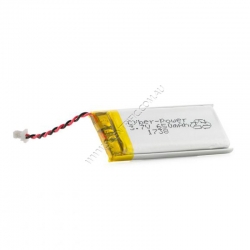
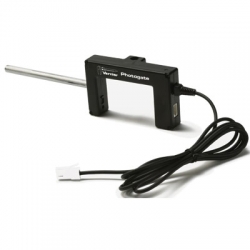

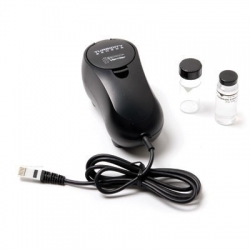

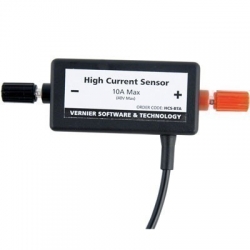
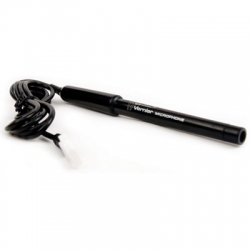
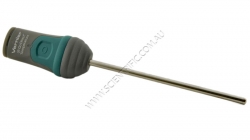

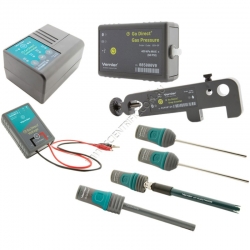
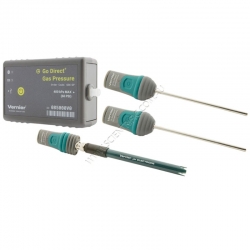

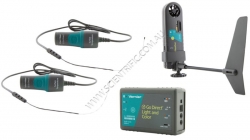

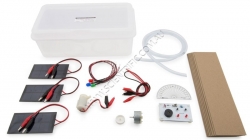
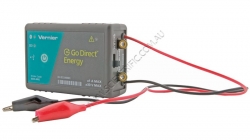

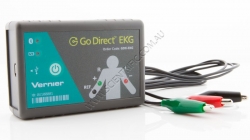



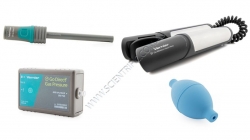


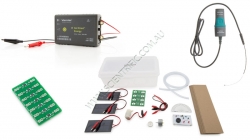
541 low relevance results shown for 'Red'. Prev |1|2|3|4|5|6|7|8|9|10|11|12|13|14|15|16|17|18|19|20|21|22 | Next | View 100 per page
Showing low relevance matches only. Return to normal search results
Curriculum resources related to 'Red'
ACSSU184 Year 10 Biological SciencesDNA - The transmission of heritable characteristics from one generation to the next involves DNA and genes ACSSU097 Year 6 Physical Sciences
Electrical Circuits - Electrical energy can be transferred and transformed in electrical circuits and can be generated from a range of sources ACSSU115 Year 7 Earth and Space Sciences
Earth Moon Sun - Predictable phenomena on Earth, including seasons and eclipses, are caused by the relative positions of the sun, Earth and the moon ACSSU229 Year 10 Physical Sciences
Forces and Motion - The motion of objects can be described and predicted using the laws of physics ACSBL029 Year 11 Biodiversity and the interconnectedness of life
Ecosystem dynamics - Models of ecosystem interactions (for example, food webs, successional models) can be used to predict the impact of change and are based on interpretation of and extrapolation from sample data (for example, data derived from ecosystem surveying techniques ACSBL085 Year 12 Heredity and continuity of life
DNA genes and the continuity of life - Frequencies of genotypes and phenotypes of offspring can be predicted using probability models, including Punnett squares, and by taking into consideration patterns of inheritance, including the effects of dominant, autosomal and sex-linked alleles and mu ACSBL090 Year 12 Heredity and continuity of life
Continuity of life on Earth - Natural selection occurs when selection pressures in the environment confer a selective advantage on a specific phenotype to enhance its survival and reproduction; this results in changes in allele frequency in the gene pool of a population ACSBL091 Year 12 Heredity and continuity of life
Continuity of life on Earth - In additional to environmental selection pressures, mutation, gene flow and genetic drift can contribute to changes in allele frequency in a population gene pool and results in microevolutionary change ACSCH056 Year 11 Molecular interactions and reactions
Intermolecular forces and gases - The shapes of molecules can be explained and predicted using three dimensional representations of electrons as charge clouds and using valence shell electron pair repulsion (VSEPR) theory ACSCH073 Year 11 Molecular interactions and reactions
Rates of chemical reactions - Catalysts, including enzymes and metal nanoparticles, affect the rate of certain reactions by providing an alternative reaction pathway with a reduced activation energy, hence increasing the proportion of collisions that lead to a chemical change ACSCH091 Year 12 Equilibrium acids and redox reactions
Chemical equilibrium systems - Over time, physical changes and reversible chemical reactions reach a state of dynamic equilibrium in a closed system, with the relative concentrations of products and reactants defining the position of equilibrium ACSCH096 Year 12 Equilibrium acids and redox reactions
Chemical equilibrium systems - Equilibrium position can be predicted qualitatively using equilibrium constants ACSCH097 Year 12 Equilibrium acids and redox reactions
Chemical equilibrium systems - Acids are substances that can act as proton (hydrogen ion) donors and can be classified as monoprotic or polyprotic depending on the number of protons donated by each molecule of the acid ACSCH098 Year 12 Equilibrium acids and redox reactions
Chemical equilibrium systems - The strength of acids is explained by the degree of ionisation at equilibrium in aqueous solution, which can be represented with chemical equations and equilibrium constants (Ka) ACSCH099 Year 12 Equilibrium acids and redox reactions
Chemical equilibrium systems - The relationship between acids and bases in equilibrium systems can be explained using the Brønsted Lowry model and represented using chemical equations that illustrate the transfer of hydrogen ions ACSCH100 Year 12 Equilibrium acids and redox reactions
Chemical equilibrium systems - The pH scale is a logarithmic scale and the pH of a solution can be calculated from the concentration of hydrogen ions; Kw can be used to calculate the concentration of hydrogen ions from the concentration of hydroxide ions in a solution ACSCH101 Year 12 Equilibrium acids and redox reactions
Chemical equilibrium systems - Acidbase indicators are weak acids or bases where the acidic form is of a different colour to the basic form ACSCH102 Year 12 Equilibrium acids and redox reactions
Chemical equilibrium systems - Volumetric analysis methods involving acidbase reactions rely on the identification of an equivalence point by measuring the associated change in pH, using chemical indicators or pH meters, to reveal an observable end point ACSCH103 Year 12 Equilibrium acids and redox reactions
Oxidation and reduction - A range of reactions, including displacement reactions of metals, combustion, corrosion, and electrochemical processes, can be modelled as redox reactions involving oxidation of one substance and reduction of another substance ACSCH104 Year 12 Equilibrium acids and redox reactions
Oxidation and reduction - Oxidation can be modelled as the loss of electrons from a chemical species, and reduction can be modelled as the gain of electrons by a chemical species; these processes can be represented using half equations ACSCH106 Year 12 Equilibrium acids and redox reactions
Oxidation and reduction - The relative strength of oxidising and reducing agents can be determined by comparing standard electrode potentials ACSCH107 Year 12 Equilibrium acids and redox reactions
Oxidation and reduction - Electrochemical cells, including galvanic and electrolytic cells, consist of oxidation and reduction half reactions connected via an external circuit that allows electrons to move from the anode (oxidation reaction) to the cathode (reduction reaction) ACSCH108 Year 12 Equilibrium acids and redox reactions
Oxidation and reduction - Galvanic cells, including fuel cells, generate an electrical potential difference from a spontaneous redox reaction; they can be represented as cell diagrams including anode and cathode halfequations ACSCH110 Year 12 Equilibrium acids and redox reactions
Oxidation and reduction - Cell potentials at standard conditions can be calculated from standard electrode potentials; these values can be used to compare cells constructed from different materials ACSCH130 Year 12 Structure synthesis and design
Properties and structure of organic materials - Data from analytical techniques, including mass spectrometry, xray crystallography and infrared spectroscopy, can be used to determine the structure of organic molecules, often using evidence from more than one technique ACSPH040 Year 11 Thermal nuclear and electrical physics
Electrical circuits - The energy available to charges moving in an electrical circuit is measured using electric potential difference, which is defined as the change in potential energy per unit charge between two defined points in the circuit ACSPH041 Year 11 Thermal nuclear and electrical physics
Electrical circuits - Energy is required to separate positive and negative charge carriers; charge separation produces an electrical potential difference that can be used to drive current in circuits ACSPH061 Year 11 Linear Motion and Waves
Linear motion and force - Representations, including graphs and vectors, and/or equations of motion, can be used qualitatively and quantitatively to describe and predict linear motion ACSPH064 Year 11 Linear Motion and Waves
Linear motion and force - Momentum is a property of moving objects; it is conserved in a closed system and may be transferred from one object to another when a force acts over a time interval ACSPH065 Year 11 Linear Motion and Waves
Linear motion and force - Energy is conserved in isolated systems and is transferred from one object to another when a force is applied over a distance; this causes work to be done and changes to kinetic and/or potential energy of objects ACSPH073 Year 11 Linear Motion and Waves
Waves - A mechanical system resonates when it is driven at one of its natural frequencies of oscillation; energy is transferred efficiently into systems under these conditions ACSPH076 Year 11 Linear Motion and Waves
Waves - A wave model explains a wide range of lightrelated phenomena including reflection, refraction, total internal reflection, dispersion, diffraction and interference; a transverse wave model is required to explain polarisation ACSPH021 Year 11 Thermal nuclear and electrical physics
Heating processes - Change of state involves internal energy changes to form or break bonds between atoms or molecules; latent heat is the energy required to be added to or removed from a system to change the state of the system
Products related to 'Red'

Vernier Go Direct 650mAH Replacement Battery
VERNIER GO DIRECT 650mAH REPLACEMENT BATTERY
The Vernier Go Direct 650 mAh replacement battery is a rechargeable, lithium-polymer unit with a greater capacity
than Vernier's standard GDX-BAT-300 battery.
All Vernier batteries have a one year warranty but are expecte...
Order code: GDX-BAT-650

Vernier Photogate
VERNIER PHOTOGATE
The Vernier photogate is used for speed and acceleration measurements of objects passing through the gate. The object blocks an infrared beam as it passes. Motion data can be determined in software from the timing of beam blocking.
This general-purpos...
Order code: VPG-BTD

Vernier Surface Temperature Probe
VERNIER SURFACE TEMPERATURE PROBE
Vernier's Surface Temperature Sensor is designed for use in situations in which low thermal mass or flexibility is required, or for a skin temperature measurement. It has an exposed thermistor that results in an extremely rapid response t...
Order code: STS-BTA

Vernier Turbidity Sensor
VERNIER TURBIDITY SENSOR
Vernier's Turbidity Sensor can be used in Chemistry, Biology, Water Quality, Physical Science and Earth Science studies to measure the turbidity of freshwater or seawater samples. Its small, sleek design and simple set up make it easy to use at th...
Order code: TRB-BTA

Vernier Hand-Grip Heart Rate Monitor
Currently unavailable, we are awaiting confirmation it complies with Button Battery safety requirements.
VERNIER HAND GRIP HEART RATE MONITOR The Vernier Hand-Grip Heart Rate Monitor is ideal for determining a person's heart rate while mobile or stationary. With this sensor heart rate can be monitored during, as well as after exercise. The sensor consists of wireless hand gr... Order code: HGH-BTA
VERNIER HAND GRIP HEART RATE MONITOR The Vernier Hand-Grip Heart Rate Monitor is ideal for determining a person's heart rate while mobile or stationary. With this sensor heart rate can be monitored during, as well as after exercise. The sensor consists of wireless hand gr... Order code: HGH-BTA

Vernier High Current Sensor
VERNIER HIGH CURRENT SENSOR
Use Vernier's High Current Sensor in experiments that involve currents larger than 1A, such as solar panels, hand generators and other alternative energy projects.
The High Current Sensor has a range of ±10 A. Current is measured with a Hall...
Order code: HCS-BTA

Vernier Microphone
VERNIER MICROPHONE
Use the Vernier microphone to display and study the waveforms of sounds from voices and musical instruments. It is also appropriate for speed of sound experiments.
Activities with sound waves:
• Demonstrate how the wave pattern changes when ...
Order code: MCA-BTA

Vernier Go Direct Biology Standard Package
VERNIER GO DIRECT BIOLOGY STANDARD PACKAGE
Designed for use by a group of 2-4 students, the Vernier Go Direct Biology Standard Package includes:
• GDX-TMP Vernier Go Direct Temperature Probe
•
Order code: GDP-BIO-ODX

Vernier Go Direct Biology Starter Package
VERNIER GO DIRECT BIOLOGY STARTER PACKAGE
Designed for use by a group of 2-4 students, the Vernier Go Direct Biology Starter Package includes:
• GDX-TMP Vernier Go Direct Temperature Probe
•
Order code: GDP-BIO-ST

Vernier Go Direct Chemistry Standard Package
VERNIER GO DIRECT CHEMISTRY STANDARD PACKAGE
Designed for use by a group of 2-4 students, the Vernier Go Direct Chemistry Standard Package includes:
• GDX-TMP Vernier Go Direct Temperature Probe x 2
•
Order code: GDP-CH-DX

Vernier Go Direct Chemistry Starter Package
VERNIER GO DIRECT CHEMISTRY STARTER PACKAGE
Designed for use by a group of 2-4 students, the Vernier Go Direct Chemistry Starter Package includes:
• GDX-TMP Vernier Go Direct Temperature Probe x 2
•
Order code: GDP-CH-ST

Vernier Go Direct Advanced Chemistry Package
VERNIER GO DIRECT ADVANCED CHEMISTRY PACKAGE
Designed for use by a group of 2-4 students, the Vernier Go Direct Advanced Chemistry Package includes:
• GDX-TMP Vernier Go Direct Temperature Probe
•
Order code: GDP-CHMA-SV

Vernier Go Direct Climate and Meteorology Experiments Package
VERNIER GO DIRECT CLIMATE AND METEOROLOGY EXPERIMENTS PACKAGE
Explore weather, climate and other important weather related topics with your Year 4-8 Middle School students. Collect, share and analyze sensor data with Vernier's free Graphical Analysis software. The GA app ...
Order code: GDP-CM

Vernier Go Direct Elementary Standard Package
VERNIER GO DIRECT ELEMENTARY STANDARD PACKAGE
Designed for use by a group of 2-4 students, the Vernier Go Direct Elementary Standard Package includes:
• GDX-MD Vernier Go Direct Motion Detector
•
Order code: GDP-EL-DX

Vernier Go Direct Investigating Solar Energy Package
VERNIER GO DIRECT INVESTIGATING SOLAR ENERGY PACKAGE
Examine renewable energy, solar power and engineering design with your Years 2-6 students. Collect, share and analyze sensor data with Vernier's free Graphical Analysis software. The GA app facilitates student understan...
Order code: GDP-EL-SE

Vernier Go Direct Investigating Wind Energy Package
VERNIER GO DIRECT INVESTIGATING WIND ENERGY PACKAGE
Examine renewable energy, wind power and engineering design with your Years 2-6 students. Collect, share and analyze sensor data with Vernier's free Graphical Analysis software. The GA app facilitates student understandi...
Order code: GDP-EL-WE

Vernier Go Direct Environmental Science Starter Package
VERNIER GO DIRECT ENVIRONMENTAL SCIENCE STARTER PACKAGE
Engage your students in investigating their environment with these Vernier Go Direct sensors. Collect, share and analyze sensor data with Vernier's free Graphical Analysis software. The GA app facilitates student und...
Order code: GDP-EV-ST

Vernier Go Direct Physiology Standard Package
VERNIER GO DIRECT HUMAN PHYSIOLOGY STANDARD PACKAGE
Designed for use by a group of 2-4 students, the Vernier Go Direct Human Physiology Standard Package includes:
• GDX-EKG Vernier Go Direct EKG Sensor
•
Order code: GDP-HP-DX

Vernier Go Direct Physiology Starter Package
VERNIER GO DIRECT PHYSIOLOGY STARTER PACKAGE
Encourage your students to explore the physiology of various human organ systems with these Vernier Go Direct Sensors and accessories. Collect, share and analyze sensor data with Vernier's free Graphical Analysis software. The ...
Order code: GDP-HP-ST

Vernier Go Direct Middle School Science Package
VERNIER GO DIRECT MIDDLE SCHOOL SCIENCE PACKAGE
Designed for use by a group of 2-4 students, the Vernier Go Direct Middle School Deluxe Package includes:
• GDX-MD Vernier Go Direct Motion Detector
•
Order code: GDP-MS-DX

Vernier Go Direct Exploring Earth and Space Science Package
VERNIER GO DIRECT EXPLORING EARTH AND SPACE SCIENCE PACKAGE
Explore the Earth science topics of weather, soil and water quality with your Years 4-8 students. Collect, share and analyze sensor data with Vernier's free Graphical Analysis software. The GA app facilitates stu...
Order code: GDP-MS-ESS

Vernier Go Direct Exploring Life Science Package
VERNIER GO DIRECT EXPLORING LIFE SCIENCE PACKAGE
Explore life sciences from yeast to humans with your Years 4-8 Middle School students. Collect, share and analyze sensor data with Vernier's free Graphical Analysis software. The GA app facilitates student understanding wit...
Order code: GDP-MS-LS

Vernier Go Direct Exploring Physical Science Package
VERNIER GO DIRECT EXPLORING PHYSICAL SCIENCE PACKAGE
Explore various physical science topics in basic chemistry and physics from matter and energy to motion and forces with your Years 4-8 Middle School students. Collect, share and analyze sensor data with Vernier's free G...
Order code: GDP-MS-PS

Vernier Exploring Motion and Force with Go Direct Sensor Cart Package
VERNIER GO DIRECT EXPLORING MOTION AND FORCE WITH SENSOR CARTS PACKAGE
Explore the force of friction, aspects of motion and simple machines such as the lever, ramp and pulley, all using Vernier's Go Direct Sensor Cart and materials typically found in your Years 6-9 Middle...
Order code: GDP-MS-SC

Vernier Go Direct Solar Energy Explorations Package
VERNIER GO DIRECT SOLAR ENERGY EXPLORATIONS PACKAGE
Examine renewable energy, solar power and engineering design with your Year 4-8 Middle School students. Collect, share and analyze sensor data with Vernier's free Graphical Analysis software. The GA app facilitates stude...
Order code: GDP-MS-SE
541 low relevance results shown for 'Red'. Prev |1|2|3|4|5|6|7|8|9|10|11|12|13|14|15|16|17|18|19|20|21|22 | Next | View 100 per page



 ,
,